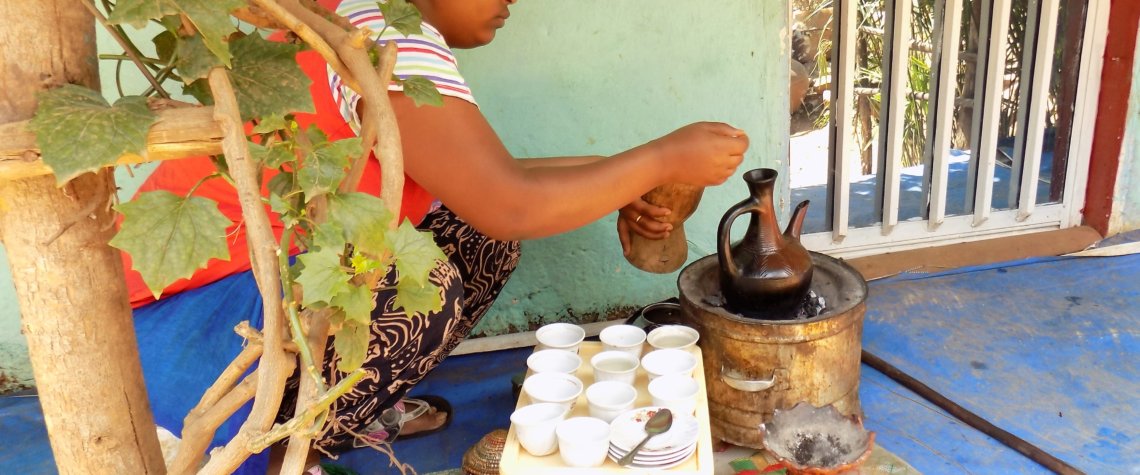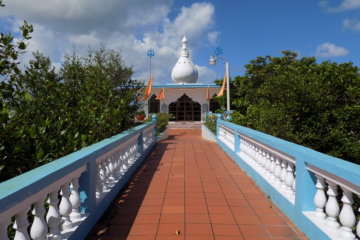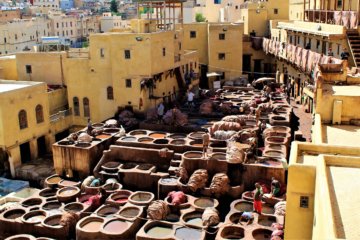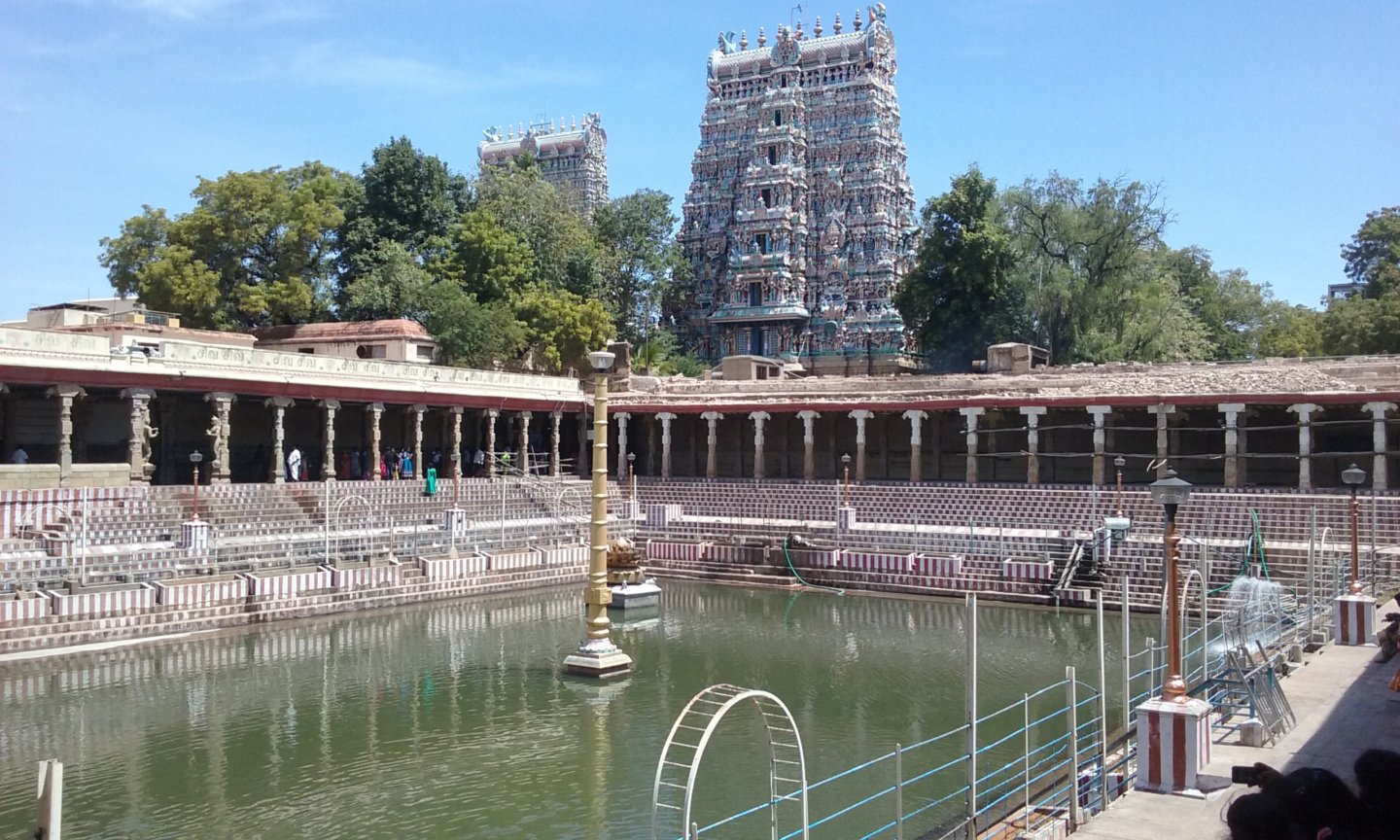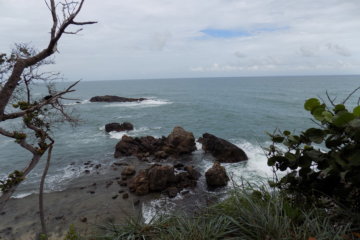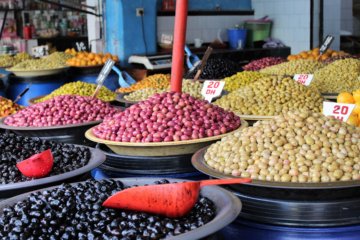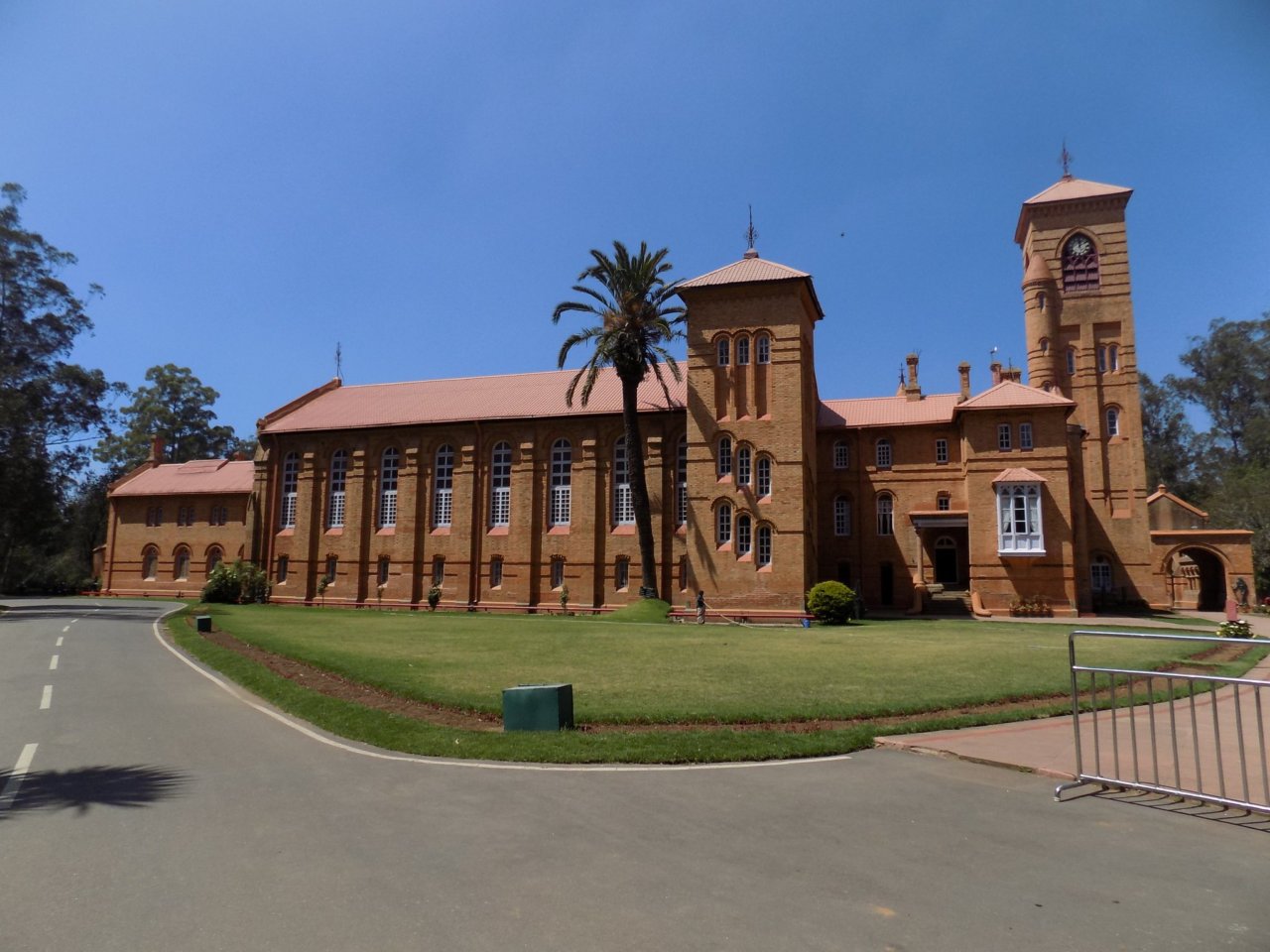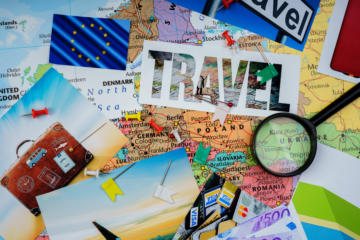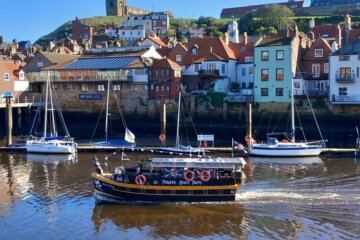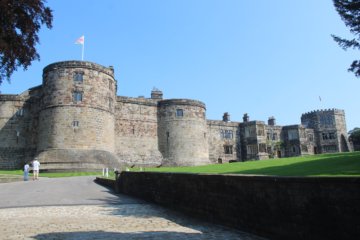Mark and I are both coffee lovers and one of the things we were looking forward to about our trip around Ethiopia was drinking lots of it, in the place where it was first discovered. We were not disappointed!
In this article
The History of Coffee in Ethiopia
Ethiopia is where Coffea arabica, the coffee plant, originates.
Legend has it that an Ethiopian goatherder named Kaldi discovered the plant in the ninth century. He noticed that when his flock ate the bright red berries of a certain bush, they became more energetic and were jumping around. Kaldi tried the berries himself and experienced a feeling of exhilaration. He took some of the berries to a monk in a nearby monastery. The monk disapproved of their mind-altering properties and threw them in the fire. A delicious aroma resulted. The roasted beans were rescued from the embers, ground up, dissolved in water, and, voilà, the first cup of coffee was made! So the story goes!!
This tale did not appear in writing until 1671 so it’s likely to be a myth, but who cares? It’s still a good story!
Coffee in Ethiopia Today
Coffee is vital to Ethiopia’s economy, accounting for 60% of the country’s foreign income. It is thought that 15 million Ethiopians rely on some aspect of coffee production for their livelihood.
Ethiopia is the seventh-largest coffee producer in the world and the biggest in Africa. Of the 26,000 tonnes produced each year, half of it is drunk by Ethiopians. Our guide told us that his mum drinks ten to twelve cups a day! Of the remainder, half of it is exported to Europe, 25% to the USA and 25% to Asia.
The total area used to grow coffee in Ethiopia is thought to be around 4000 square kilometres. It’s hard to be exact because most growers are individuals or small businesses. Production methods have changed little through the centuries with almost all of the cultivating and drying still done by hand.
Ethiopian Coffee Beans
Ethiopian coffee beans of the species Coffea arabica can be divided into three categories:
Longberry
These are the largest beans and are considered to be the highest quality for the export market, both in terms of value and flavour.
Shortberry
These are smaller but they are seen as a high-grade bean in the domestic market, especially in Eastern Ethiopia where they originate.
Mocha
The mocha variety is highly prized for its complex chocolate, spice and citrus notes.
The Ethiopian Coffee Ceremony
Coffee in Ethiopia is served very strong and black, espresso-style, and usually involves an evocative ritual which involves all the senses. It is a process not to be hurried. The traditional coffee ceremony takes at least 30 minutes from start to finish, but the resulting beverage is well worth waiting for!
The ceremony is traditionally performed by women and is seen as an honour, never a chore. First, grass is spread on the floor. This is sometimes decorated with flowers. Green coffee beans are then roasted in a pan over charcoal, sometimes with incense burning around it. Next, the beans are ground by hand using a long stick and a wooden bowl, similar to a pestle and mortar. Once ground, the beans are added to boiling water in a special pot called a jebena which has a spherical base, a long thin neck and a pouring spout. The coffee is left on the charcoal for a few minutes to brew. Typically, coffee is brewed three times, with the third brewing considered to be the best. Sugar is usually added during the brewing process, although Ethiopians are coming to understand that foreigners often don’t like their coffee to be too sweet, so they are leaving the addition of sugar to the individual.
When it’s ready, the host pours the coffee into small, handleless cups which have been arranged on a tray. She pours from a height of about 30cm and doesn’t stop until all the cups are full.
Our Experience of Coffee in Ethiopia
Travelling in Ethiopia, there were ten of us in our group. All but one of us were coffee drinkers at the start of the trip and the tenth was converted by day two, so it was one of the great pleasures of the journey to sit and watch coffee being made and then savour drinking it.
Our first experience of the coffee ceremony was with Yuhn, our guide in Addis. He took us to a local coffee house, where it was the job of one of the daughters of the house to make the coffee. First, she selected the right number and blend of beans to roast in an iron skillet over an open fire. As they were roasting, she wafted the hot pan under our noses to whet our appetites for what was to come. Our hostess ground the roasted beans by hand in a pestle and mortar. The mortar was made of eucalyptus wood. She scolded her little sister about the first ‘pestle’ she brought her as it was made of metal and would have tainted the taste of the coffee. Once she had ground the beans to a fine powder, she began to brew the coffee by putting the grounds into a jebena and adding water. When the coffee boiled up through the neck, she poured it in and out of another container to cool it. She then returned the liquid to the jebena until it boiled again and she repeated the process. There was a filter made of horsehair in the spout to prevent the grounds from escaping. While the coffee was boiling, our hostess burned frankincense over charcoal in a brazier which added to the whole experience. When the coffee was ready, she poured it into small cups, pouring one more cup than she needed, for luck. The coffee was absolutely delicious!!
We had coffee made in this way many times during our stay in Ethiopia. Sometimes, the incense had a different fragrance which seemed to change the taste of the coffee. Sometimes, we were served popcorn or peanuts to accompany the coffee. Sometimes, the blend of beans made the coffee taste chocolatey or spicy. But … it was always good!
There were times when our coffee was made in a more conventional coffee machine. It was still good, strong and delicious, nowhere more so than when we visited Tomoca, the original Italian coffee shop in Addis Ababa. We could smell the beans roasting as soon as we got out of the car!
The best thing about stopping for coffee in Ethiopia, though, was the price – usually about 30 pence a cup, but often as little as 15 pence! It’s probably a good thing that we were only there for a few weeks – I would likely have become a caffeine addict if we’d been there much longer! Talking of which, one of our party took 5 kg of Ethiopian coffee back to Australia in his backpack, so he would have been enjoying it long after our trip ended.
Photo Gallery
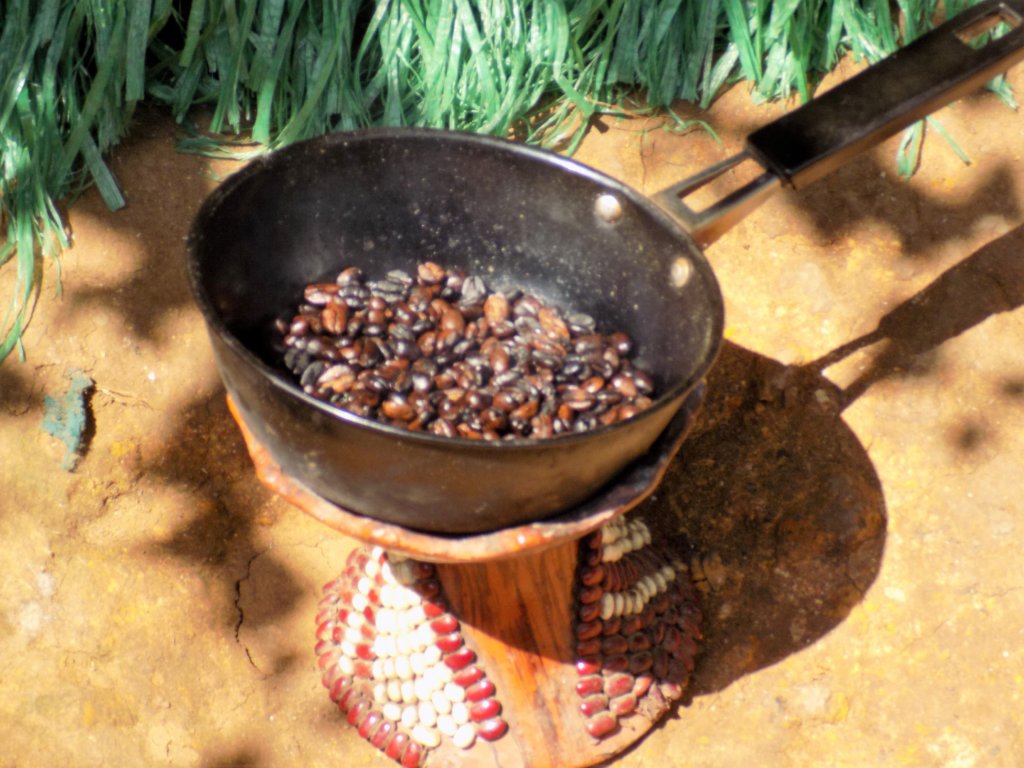
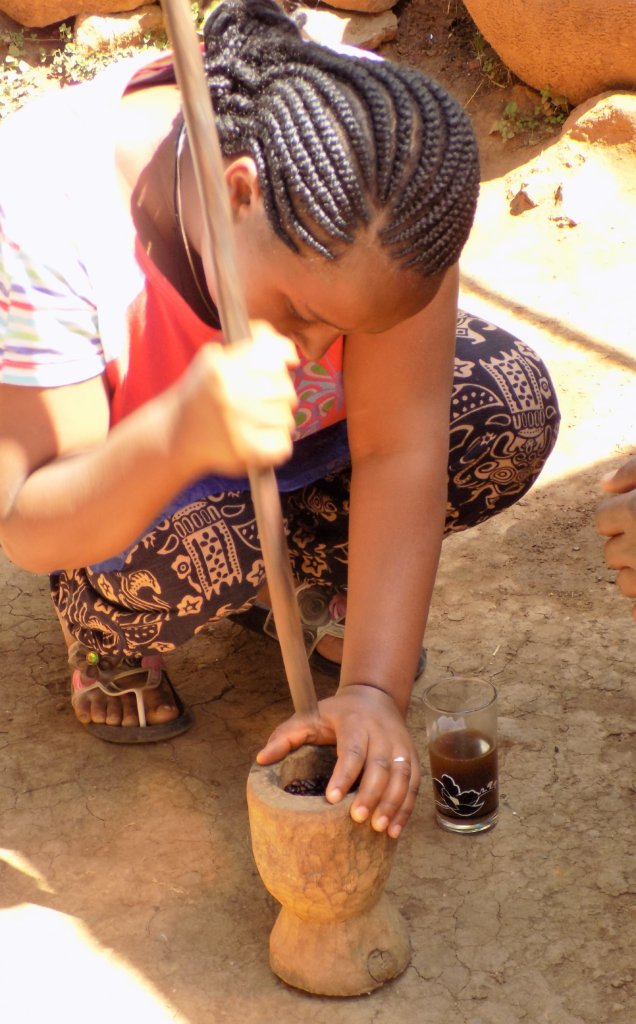
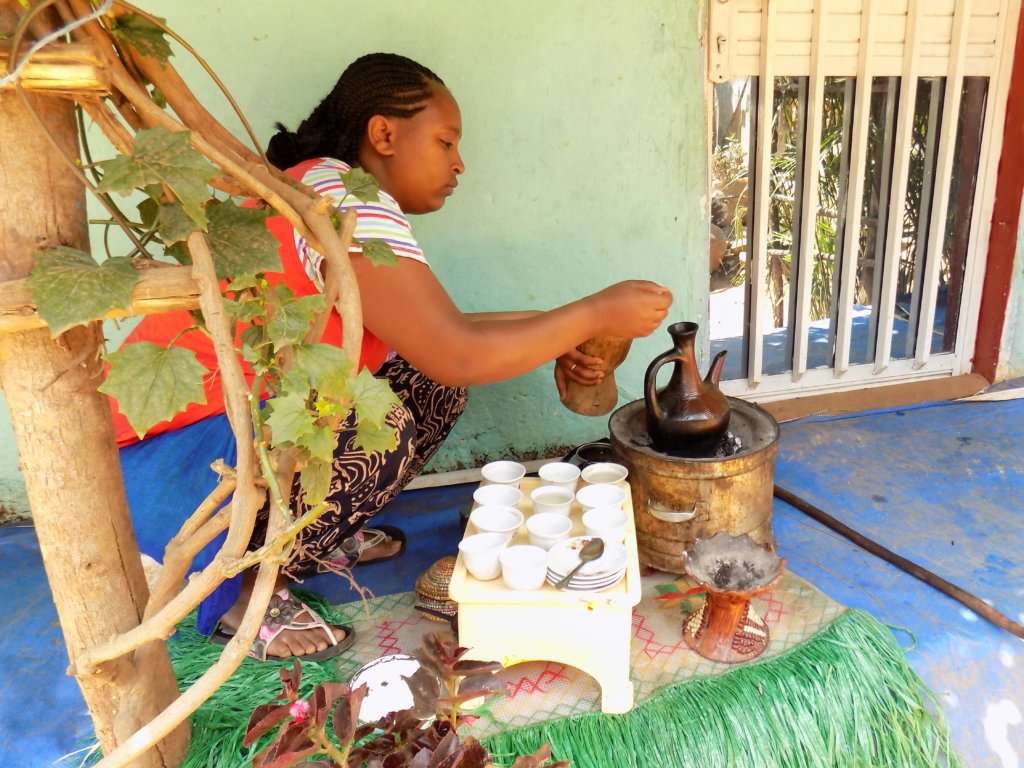
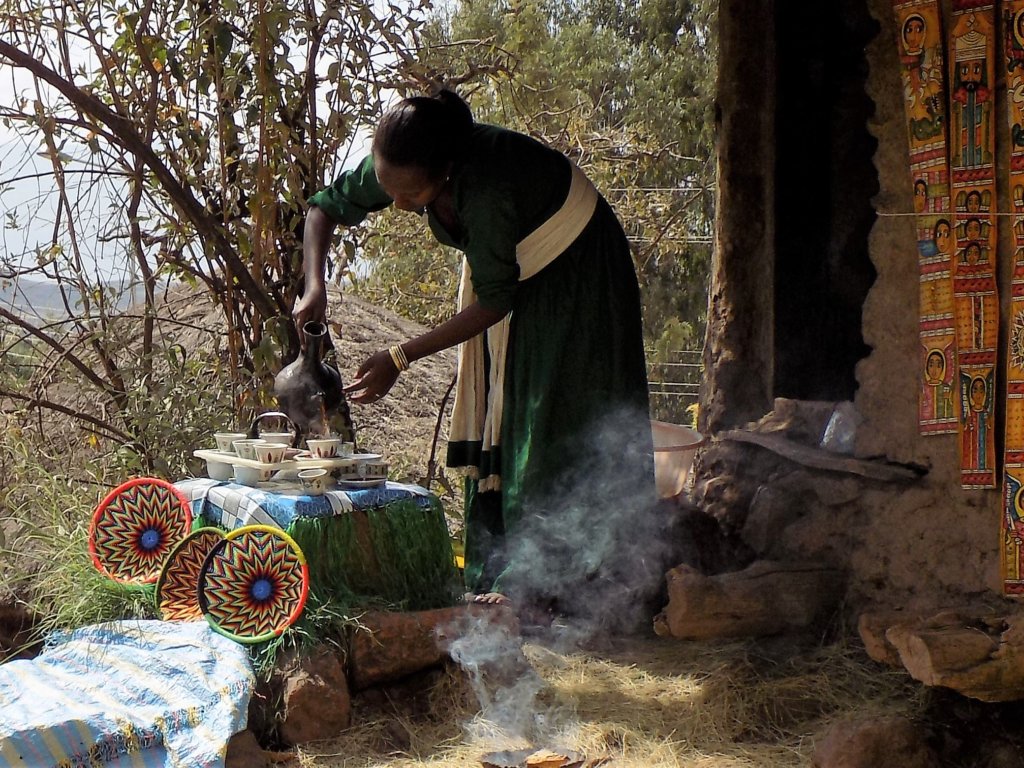
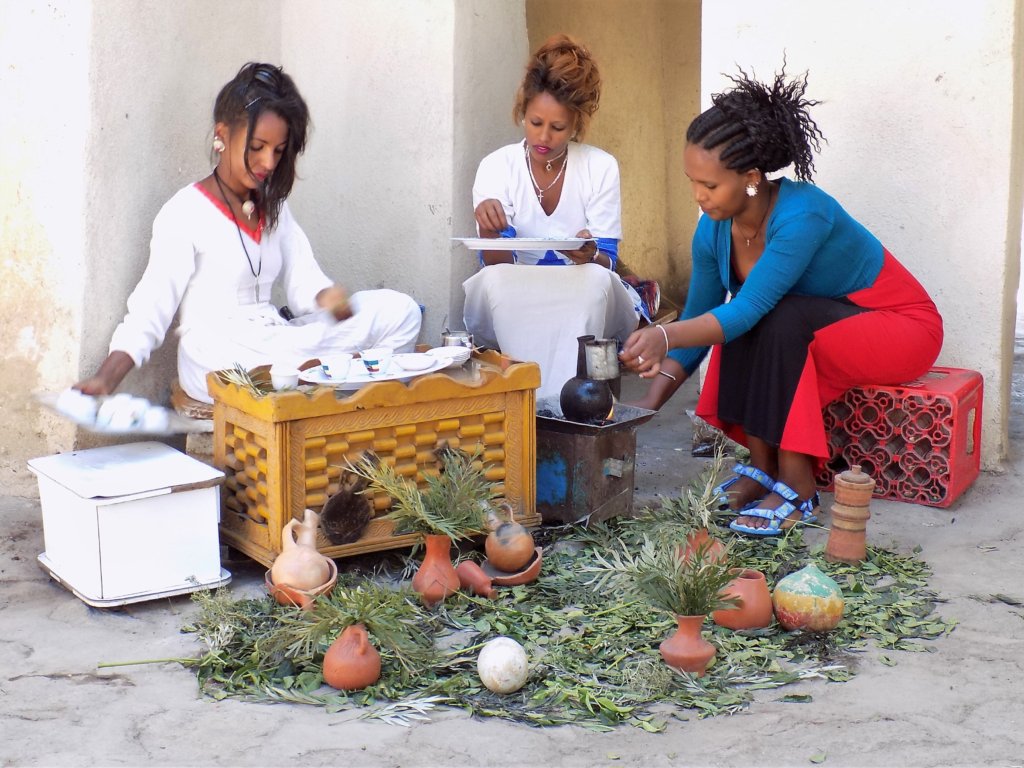
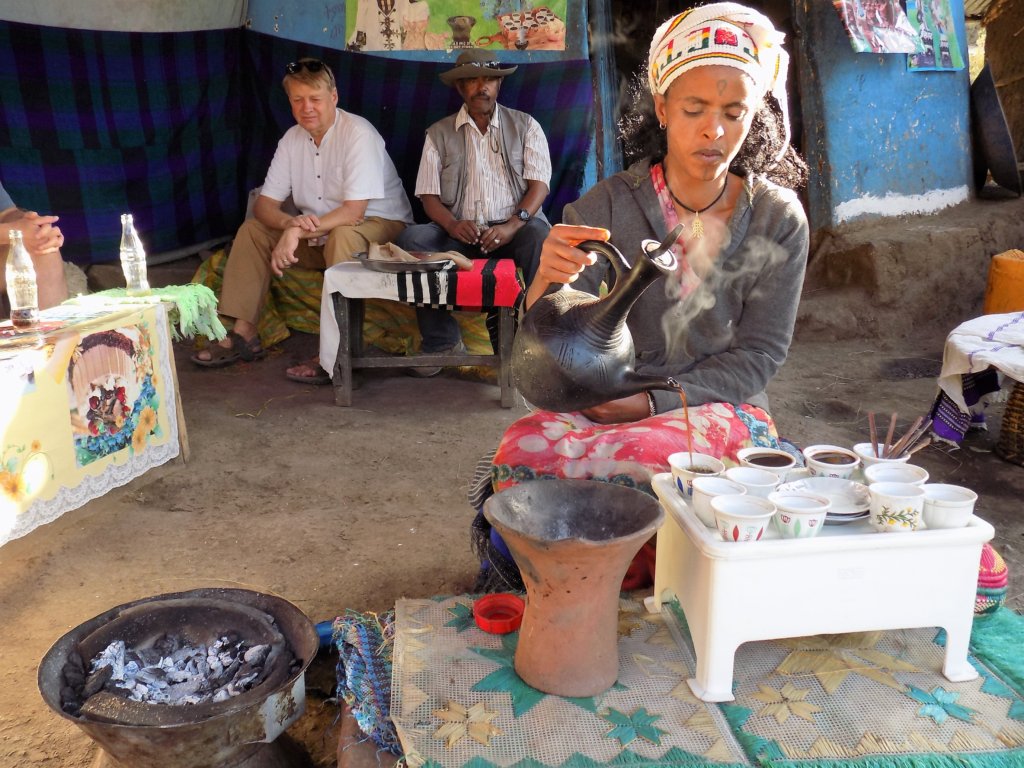
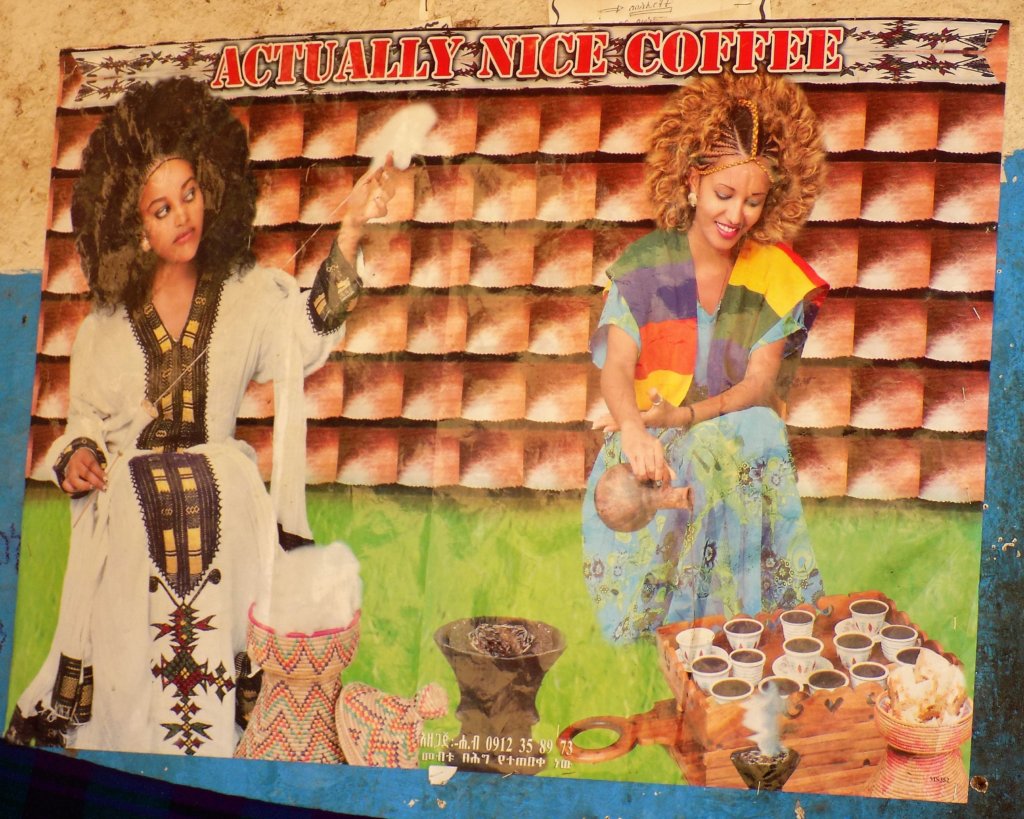
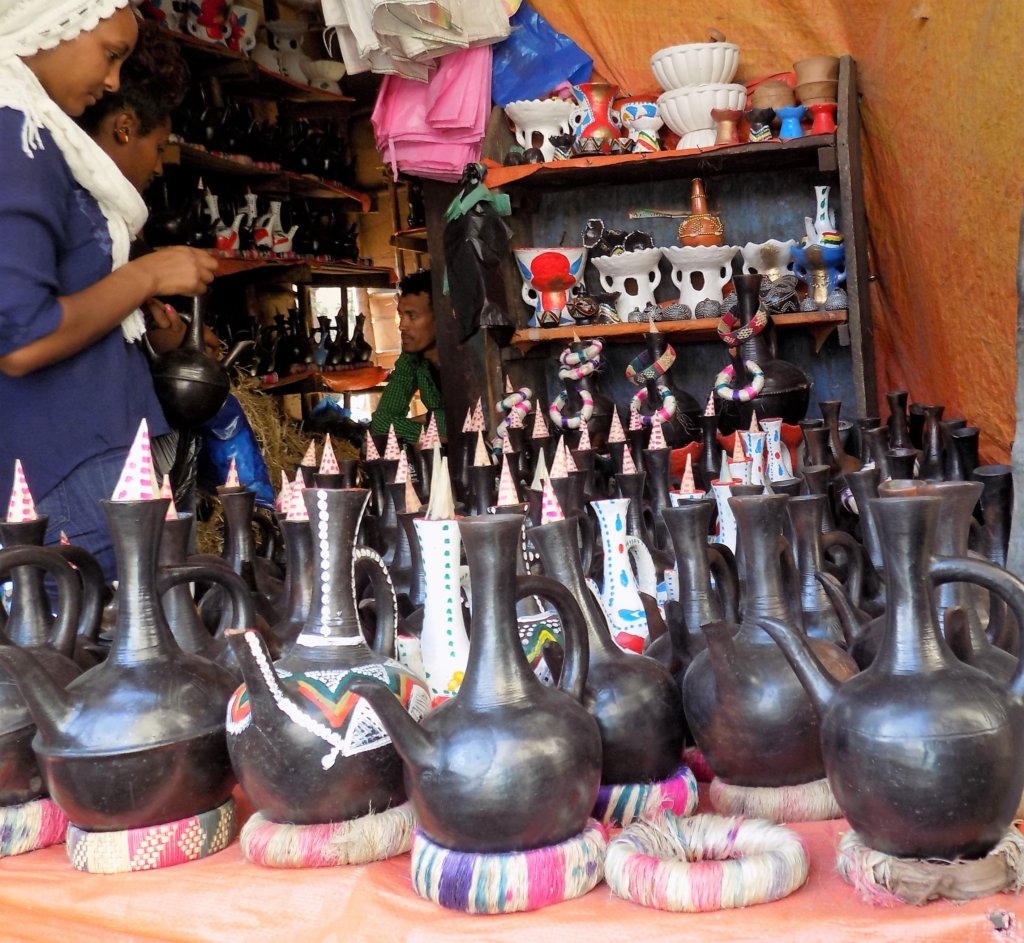
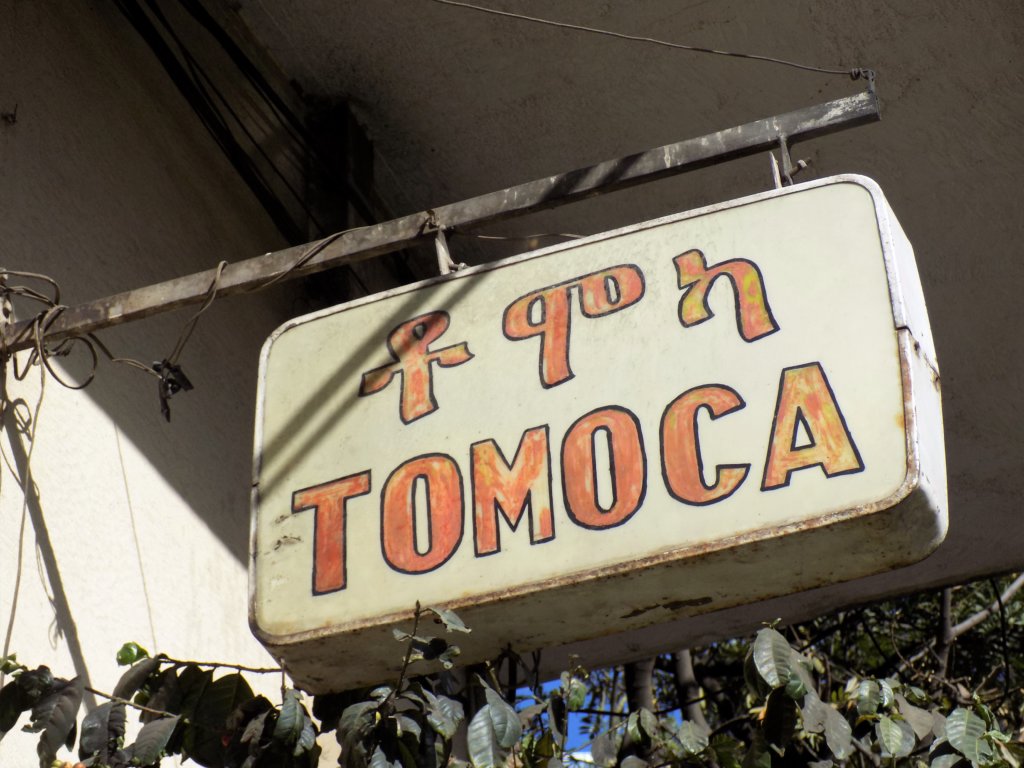
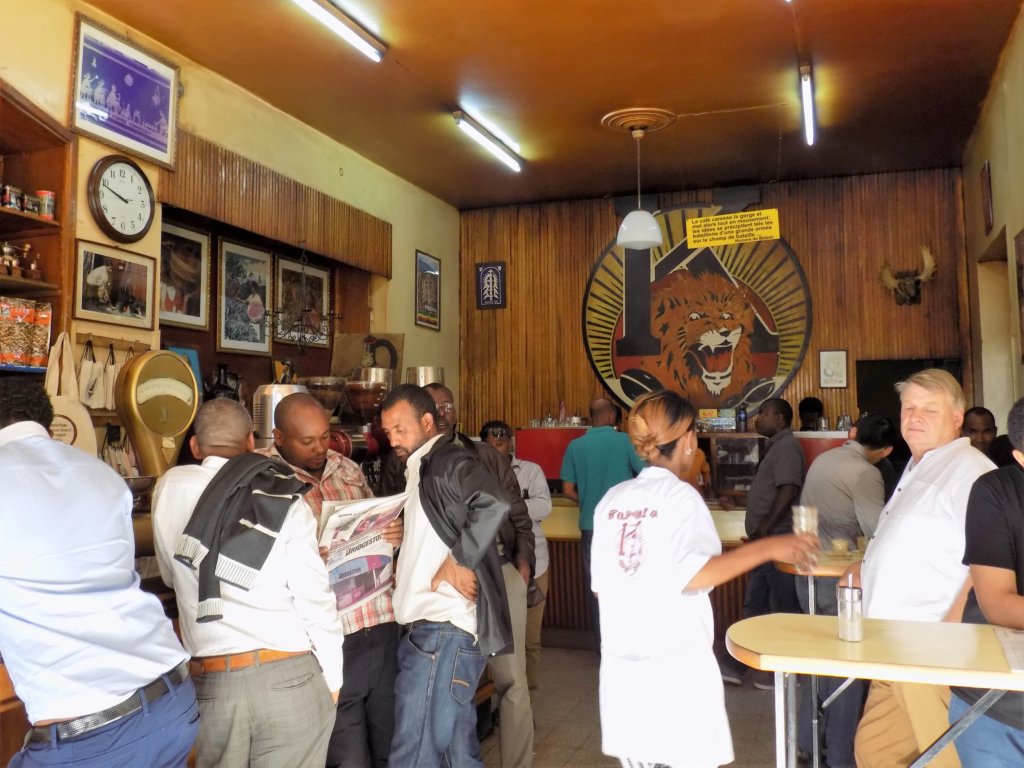
CLICK HERE TO READ MY COMPLETE TRAVEL GUIDE TO ETHIOPIA
Read More About Coffee in Ethiopia
If you like what you’ve read, PIN IT!!
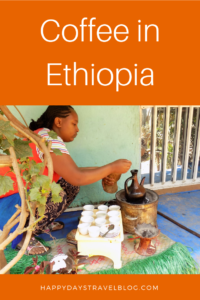
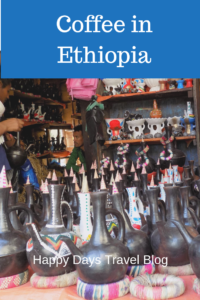
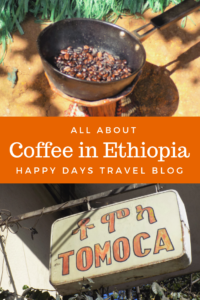
Disclosure: This post contains affiliate links. If you click through for more information, or to make a purchase, it may result in a small commission coming my way. Please note that there is no extra cost to you associated with this. Thank you so much for supporting my site.
Join our mailing list

Sign up to receive our monthly newsletter. Keep up with what we're doing and be the first to receive special offers and insider tips.

